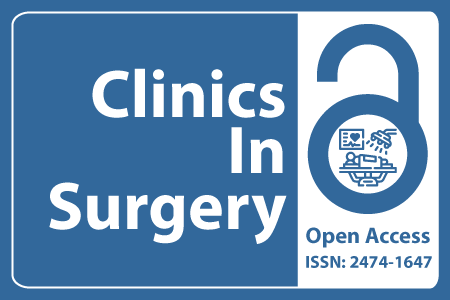
Journal Basic Info
- Impact Factor: 1.995**
- H-Index: 8
- ISSN: 2474-1647
- DOI: 10.25107/2474-1647
Major Scope
- Otolaryngology - Head and Neck Surgery
- Transplant Surgery
- Pediatric Surgery
- Thoracic Surgery
- Neurological Surgery
- Orthopaedic Surgery
- Gastroenterological Surgery
- General Surgery
Abstract
Citation: Clin Surg. 2016;1(1):1222.Case Report | Open Access
Transcatheter Aortic Valve Replacement in Two Patients with Severe Aortic Insufficiency in the Setting Aortic Root and Valve Homografts for Congenital Aortic Disease: A Valve Planning Strategy for Congenital Heart Disease
Frank E Corrigan, Patricia A Keegan, Habib Samady, Vasilis C Babaliaros and Stephen D Clements
Department of Cardiology, Emory University School of Medicine, USA
*Correspondance to: Frank E Corrigan
PDF Full Text DOI: 10.25107/2474-1647.1222
Abstract
The optimal therapeutic approach to severe aortic insufficiency in prior aortic root and valve homograft is not known and currently considered on an individual basis. We intervened in two individuals with severe aortic insufficiency in setting of an aortic root and valve homograft by placing a transcatheter aortic valve replacement (TAVR). Our first individual developed severe, symptomatic aortic insufficiency 18 years after a 20-mm homograft was placed for bicuspid aortic insufficiency and an ascending aortic aneurysm. Our second patient developed severe, symptomatic aortic insufficiency 13 years after a second repair requiring aortic root and valve replacement with a 20-mm aortic homograft for aortic insufficiency and ascending aortic ectasia. Both patients underwent successful TAVR with Edwards Sapien XT and 3 valves with excellent results and were discharged on post-operative day one. Both were symptomatically improved at follow-up with evidence of improvement in ventricular function on echocardiogram. Valve-in-valve TAVR within an aortic valve and root homograft can be considered as a less invasive method to treat homograft degeneration. Percutaneous valve therapies are attractive options in congenital heart disease and likely can be used in a valve planning strategy to manage the need and timing for repeat open heart surgery over a patient’s lifetime.
Keywords
Cite the article
Corrigan FE, Keegan PA, Samady H, Babaliaros VC, Clements SD. Transcatheter Aortic Valve Replacement in Two Patients with Severe Aortic Insufficiency in the Setting Aortic Root and Valve Homografts for Congenital Aortic Disease: A Valve Planning Strategy for Congenital Heart Disease. Clin Surg. 2016; 1: 1222.













